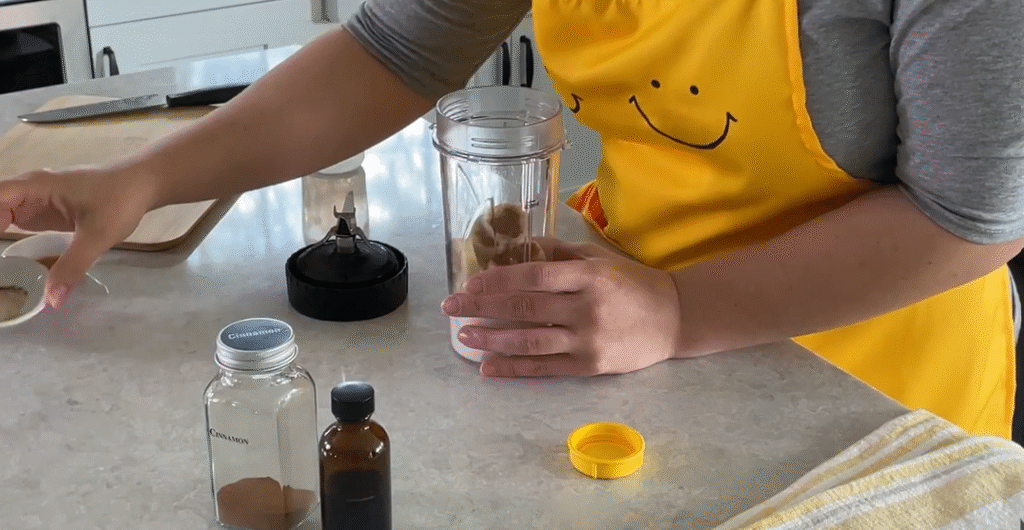Known for its artistic flair, Brooklyn’s DUMBO neighborhood was at the epicenter of an unexpected culinary phenomenon. Together with OddFellows Ice Cream, Frida, a company known for its cleverly designed maternal health products, created what might be the most talked-about dessert of the summer: Breast Milk Ice Cream. Although it doesn’t contain real human milk, liposomal bovine colostrum was used to create a flavor that mimics its sweetness and slight salinity. The outcome? A light, creamy, and possibly unexpectedly comforting product.
Only fifty cups were distributed daily during the launch week, which generated a lot of interest and long lines of eager tasters. Pastel colors, whimsical breast imagery, and cheeky slogans like “Just like mom used to make” were all part of the store’s decor. Charlene Rymsha, a visitor who was breastfed until she was a toddler, described the experience as emotionally stirring. Enjoying her scoop on a bench by the ferry, she said, “I didn’t expect to feel anything, but it surprised me—mentally and emotionally.”
Others adopted a more philosophical stance, such as Dale Kaplan. All ice cream is basically breast milk, isn’t it? She pondered, “I mean, cows are mothers too,” igniting the broader discussion about how we accept one milk source while avoiding another. Throughout the day, as more people considered the strange combination of comfort food and maternal symbolism, that sentiment emerged as a recurrent theme.
Product & Brand Profile
| Item | Details |
|---|---|
| Product Name | Breast Milk Ice Cream |
| Brand Collaboration | Frida x OddFellows |
| Not Made With Human Milk | Correct—Uses liposomal bovine colostrum instead |
| Flavour Profile | Lightly sweet, slightly salty, hints of honey and colostrum |
| Retail Price | $12.99 USD (Limited Edition) |
| Location of Release | Brooklyn, NYC (OddFellows Ice Cream Co.) |
| Availability | 50 free scoops per day during launch campaign |
| Brand Background | Frida – Known for parenting & maternal health products |
| Official Product Link | www.frida.com/products/breast-milk-ice-cream |
| Purpose Behind the Flavor | Celebrate motherhood, normalize breastfeeding, start conversation |

With her four-month-old son, Tom, strapped to her chest, new mother Adi Barnea arrived. She was in a unique position to assess the accuracy of the flavor because she had tasted her own milk. She clarified, “To be honest, breast milk tastes like leftover cereal milk—slightly sweet but subtle.” Although the ice cream tasted more like a mango-vanilla hybrid than a perfect match, she still thought it was enjoyable. It’s still of excellent quality. Even if it isn’t exactly like the real thing, I would still eat it again.
Reactions to that flavor were mixed but generally positive; another taster, Zach De Santis-Salavarria, described it as “kind of like cake batter.” Zach mentioned that he was pleasantly surprised by its sweet and creamy texture, as opposed to what he had anticipated being salty or unusual. “It’s better than I anticipated.” Really, it’s a natural idea. If it came from an ethical source, I might even try real breast milk.
Frida was able to turn a potentially contentious idea into a cultural talking point by using strategic branding. Although creating ice cream with a breast milk theme may seem shocking at first, the motivation is complex and especially creative. The ad’s remarkably effective messaging pushes boundaries without going overboard by utilizing humor, nostalgia, and maternal pride.
The fad is reminiscent of past culinary experiments, such as the “Baby Gaga” breast milk ice cream that was served in London years ago. Due to health and sourcing issues, that version—which was made with real human milk—caused a great deal of controversy before being discontinued. By emphasizing symbolism over literalness, Frida’s strategy, in contrast, completely avoids the ethical controversy. The addition of bovine colostrum, a nutrient-rich ingredient present in early cow’s milk, gives the ice cream a purposeful nutritional twist that not only makes it more entertaining, but also significantly improves its functionality.
Frida and OddFellows accomplished something uncommon from the standpoint of brand storytelling: they inspired people to participate deeply in a subject that is usually reserved for whispered discussions. In the public sphere, breastfeeding has long been stigmatized and reduced to uncomfortable looks or passive-aggressive shaming. Through the introduction of a dessert that honors it, even in an indirect way, the companies created a space for conversation that feels new, hopeful, and oddly enjoyable.
Celebrities and influencers soon joined the discussion. In an Instagram story, TV host Padma Lakshmi praised the initiative, describing it as “deliciously empowering.” Actress Kristen Bell added that it “normalizes something completely normal.” Their casual yet powerfully impactful endorsements transformed the campaign from oddball to culturally relevant.
There has been a mixed but generally positive response on social media. On social media sites like Instagram and TikTok, the ice cream gained popularity. Videos of first bites were shared by users, some with genuine delight and others with skepticism. One user jokingly said, “Tastes like motherhood.” “The most comforting scoop I’ve ever had—and I’m not sure why,” another person said.
Frida has once again shown how maternal health and pop culture can interact without coming across as preachy through clever collaborations. The goal of the campaign was to use creativity to spark conversation rather than focus on making money or even selling a product. And it was successful.
Even though breast milk ice cream might not be available for long, its effects might last long after the last scoop. This product briefly added humor to a topic that is frequently burdened by politics and pressure. By doing this, it linked people to their parents, their histories, and the universal human experience of nurturing, in addition to their tastes.

